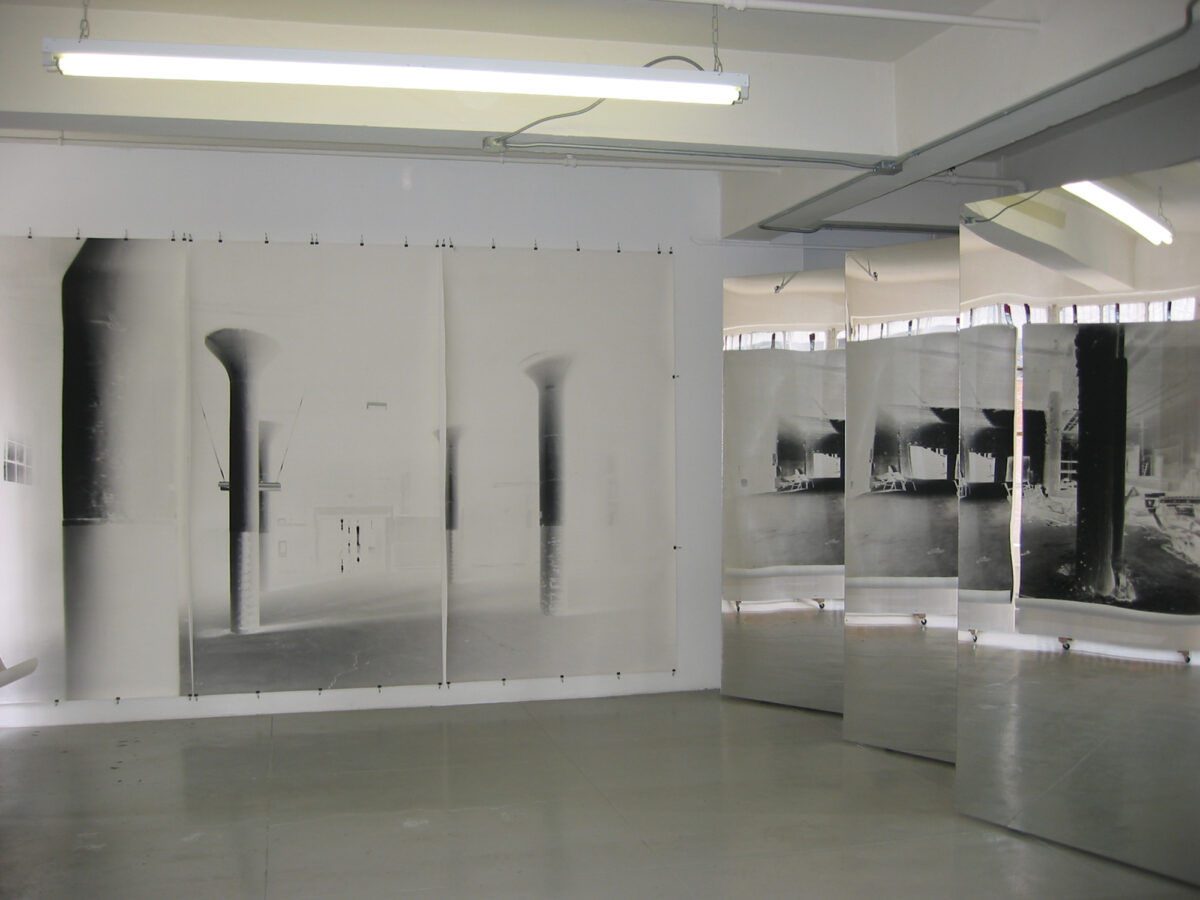2003

Throughout history, artists have included references to their own workspaces in finished pieces. And this practice is just as pervasive as is returning to previous subjects with a fresh eye. My work has often addressed issues of process, the significance of individualized space, and the notion of perpetual return, but in this body of work I takes all these themes one step further.
In early 2003 I immersed myself in these traditions and approaches and began to transform my studio into a stage onto which I constructed a full-scale dialogue with my past works. This archival impulse is orderly and yet curiously itinerant, setting disparate locations side by side, sometimes even doubling them with mirrors as if they had been called together in a dream sequence. In this way, the photographs conflate past and present, familiar and foreign, as well as authentic and fictionalized space.
My use of the distinctive photographic technique of a room-sized camera obscura contributes to this confusion of space and time in the works. Creating unique paper negatives to recapture images—in which the tones had already been rendered as negative—allowed for a striking and unexpected transformation of my earlier works. The once-negative images are thrust into positive, challenging the sensation of inversion that one usually feels when confronted with my subjects. The viewer suddenly sees my past work in closer alignment with reality, and yet, the uncanny impressions of the now-positive subjects persist as they stand up against the negative backdrop of my studio. The brush with reality is again upset.
Less of an experiment in self-appropriation, the act of re-photographing existing works has more to do with my desire to take stock of my collective imagery and the idiosyncratic exchange they have when united. Whether it’s a dark maze of displaced factory columns, a jet plane emerging from an empty Chelsea gallery, or fractured bits of Manhattan’s skyline inexplicably transplanted inside my studio, there’s no denying that these images access a surreal state. Embedded in this new curatorial framework, the tableaux easily transport us into my mind and invite further interpretation of earlier works.




